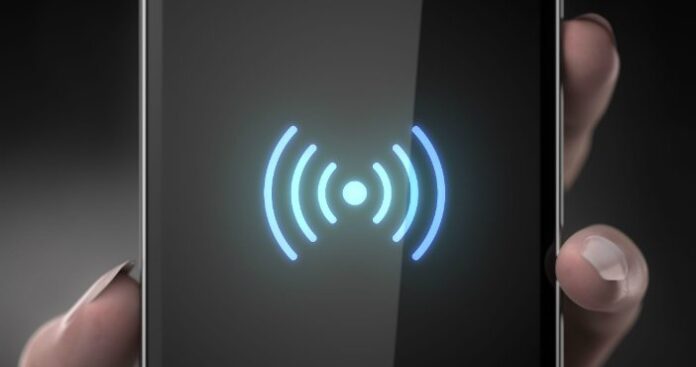With Wi-Fi Certified 6, the rate of adoption will accelerate substantially
Wi-Fi Alliance has released the Wi-Fi Certified 6 certification program, designed to ensure the best user experience based on the latest generation of Wi-Fi, IEEE 802.11ax. Wi-Fi Alliance’s VP of Marketing, Kevin Robinson told RCR Wireless News that the new certification is going to be a real inflection point in terms of the adoption rate of Wi-Fi 6 adoption.
“It’s true that Wi-Fi 6 has already been being adopted,” Robinson revealed. “You’ve seen flagship smartphones, for example. We’re also seeing some momentum around trials of Wi-Fi 6.”
Robinson explained further that while some enterprises like to be on the cutting edge, implementing new technology early in development, when it comes to the mass market, which contains numerous devices from numerous manufacturers, interoperability becomes critical. “And wi-fi certified delivers that interoperability,” he said.
While it is typical for vendors to come out with a product some time before the technology standards have been finalized, there is significant risk associated with implementing new technology. Early on in a technologies development, products are more expensive, vendor portfolios are more limited and firmware is more brittle.
“Therefore, with Wi-Fi Certified 6, you should expect to see the rate of adoption to accelerate substantially,” Robinson reasoned. “This has been the case with every previous generation of Wi-Fi, and the Alliance expects the same for Wi-Fi 6.”
What makes Wi-Fi 6 a winner?
Wi-Fi 6 really shines in any type of device-dense environment like transportation hubs, sports stadiums and industrial parks. Wi-Fi 6 has a lot of exciting features, like target wake time (TWT), which significantly improves battery life in Wi-Fi devices, 1024 quadrature amplitude modulation mode (1024-QAM), which increases throughput in Wi-Fi devices and transmit beamforming, which enables higher data rates at a given range resulting in greater network capacity. However, Robins believes the true trifecta of the new Wi-Fi features is Orthogonal frequency division multiple access (OFDMA), Multi-user multiple input multiple output (MU-MIMO) and 160 MHz channels.
OFDMA effectively shares channels to increase network efficiency and lower latency for both uplink and downlink traffic in high demand environments; MU-MIMO allows more downlink data to be transferred at once and enables an access point to transmit data to a larger number of devices concurrently; and 160 MHz channels increases bandwidth to deliver greater performance with low latency.
“Those three features together deliver many of the advancements that come along with Wi-F 6,” he claimed.
The certification process
Wi-Fi Alliance has a global lab network of authorized laboratories that it used in the development of Wi-Fi Certified 6. Cross sections of the industry were brought in to establish test regimes and protocols to ensure interoperability. “And the end of that process,” Robinson said, “the Alliance delivers what we refer to as the test bed, which is a collection of devices against which all future potential Wi-Fi certified devices are tested against.”
The first products designated Wi-Fi Certified 6, and therefore, comprise the test bed for certification include Broadcom BCM4375, Intel Home Wi-Fi Chipset WAV600 Series, Marvell 88W9064 (4×4) Wi-Fi 6 Dual-Band STA, Qualcomm Networking Pro 1200 Platform and Ruckus R750 Wi-Fi 6 Access Point.
Wi-Fi 6 adoption
As the latest generation of Wi-Fi, it will be expected to pop anywhere that Wi-Fi is, and further, will do so at an unprecedented rate. According Robinson, Wi-Fi Alliance anticipates a rapid transition to Wi-Fi 6 compared to previous generations, in part because it is the first major update to Wi-Fi in the 2.4 GHz band since 2009.
“With ac [or Wi-Fi 5], improvements were all in the 5 GHz band, so Wi-Fi 6 provides an opportunity for devices that are only in the 2.4 GHz to get many of these advanced capabilities,” he stated.
Wi-Fi 6 will also go where previous generations of Wi-Fi have rarely gone before. “Industrial IoT is an emerging area for Wi-Fi 6, which provides a much more deterministic behavior than you had with previous generation of Wi-Fi,” Robinson explained. “With the channel access approach that it offers, the network is able to coordinate the devices that are on the network and provide a higher level of assurance that traffic is going to get though with low latency. That is particularly important in industrial applications of Wi-Fi.”
Wi-Fi 6 and 5G convergence
Between the official certification of the latest Wi-Fi standards and the global rollout of 5G, it is clear that we are on a path to constant connectivity. As new sets of use cases for connectivity technology are developed as a result, and as networks become denser, the convergence of Wi-Fi and 5G will become critical to achieve a truly reliable and enhanced network.
Fortunately, Wi-Fi Alliance sees Wi-Fi and cellular remaining very strong compliments to each other. “Wi-fi and cellular have been strong compliments to each other ever since 3G,” Robinson stated. “In fact, one of the reasons what the iPhone was so successful was because Wi-Fi served such a strong compliment to cellular.”
Robinson explained that often, where there is greater connectivity, there is a greater demand for data, which then leads to a greater value of connectivity and connectivity services. He elaborated, “Some of Cisco’s projections, for example, show that the percentage of data going over wi-fi will increase as 5G comes online.”
“In many cases,” he continued, “you will see Wi-Fi 6 providing a lot of offload for cellular, particularly in doors, so that operators are able to deliver those new, innovated services they envision for 5G wherever the user goes.”
“We have no illusions that Wi-Fi is going to be able to provide a true mobility experience, but when you are in a more nomadic scenario, Wi-Fi 6 provides incredible benefits that will lead to significant traffic going over Wi-Fi,” Robinson concluded.

